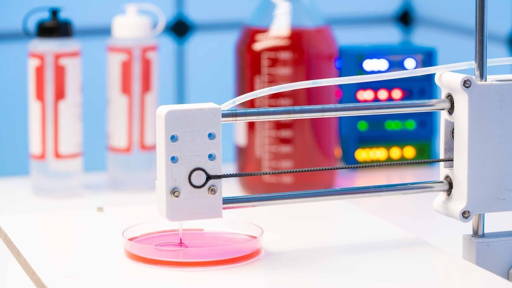Researchers at Northwestern University have developed a new, portable device that measures in real time how much breast milk a baby ingests while feeding. The technology offers parents greater insight and reassurance as well as opens doors to improved neonatal care.
The start of parenthood brings with it many uncertainties - especially when it comes to breastfeeding. How do you know if your baby is drinking enough? That question is difficult for many parents to answer. Especially with newborns, where accurate monitoring of feeding is essential, ambiguity can lead to stress and medical complications.
That's why researchers at Northwestern University developed an innovative and portable system that allows accurate and immediate measurement of the amount of breast milk a baby consumes while drinking. The invention provides not only reassurance to parents, but also valuable data for healthcare professionals - especially in neonatal intensive care units (NICUs).
Smart technology, subtly integrated
The system consists of a soft, flexible sensor that is worn comfortably around the mother's breast. This sensor - barely thicker than a band-aid - contains electrodes and is linked to a small, lightweight base station that rests in the middle. Inside this base station are a rechargeable battery, a Bluetooth module and a memory chip for wireless data transfer, to a smartphone or tablet.
During feeding, the system measures subtle changes in electrical impedance - a technique that reliably shows how much fluid is in the breast tissue. Based on that, the device accurately calculates how much milk a baby has absorbed. The data is transmitted wirelessly to a mobile application, where parents and caregivers get a clear, graphic representation of milk consumption in real time.
Transparency and confidence in breastfeeding
The new technology offers a solution to one of the most common uncertainties surrounding breastfeeding: how much is the baby actually ingesting? According to the researchers, the system can be a valuable tool especially in the first days and weeks after birth. “Breastfeeding is often a blind spot, both for parents and professionals. With this technology, we want to make that spot visible without disrupting the natural interaction between mother and child,” said Professor John A. Rogers, principal investigator and biomedical engineer at Northwestern.
The benefits are both psychological and clinical. Parents experience less stress by getting objective feedback on their baby's feeding. At the same time, professionals get more data to better monitor the nutritional status of vulnerable newborns and make adjustments as needed.
We also recently reported on the development of a smart nursing compress that analyzes the quality of breast milk in real time. The compress contains sensors that detect substances such as acetaminophen (paracetamol), which helps parents determine whether it is safe to breastfeed after taking medication. Work is also underway on versions that can measure other substances, such as glucose. This technology offers new opportunities for monitoring the health of both mother and child during the breastfeeding period.
Application in the NICU
Especially in neonatal intensive care units, technology that measures the amount of breast milk a newborn baby drinks offers important benefits. Premature or medically fragile babies often require a close balance between nutritional intake, growth and medical support. In this setting, the system can support caregivers in assessing the effectiveness of breastfeeding alongside tube or bottle feeding.
In addition, the system enables better monitoring of the transition from artificial feeding to breastfeeding. This will allow objective data to determine when a baby is ready to fully transition to natural feeding - something that is now often done based on observation and judgment.
Clinical validation and future vision
The device has now been extensively tested in several research phases. First, the technology was validated using computational models and laboratory experiments. Next, a clinical pilot took place in a hospital setting, with new mothers wearing the device during breastfeeding.
The results of this clinical validation were recently published in the leading journal Nature Biomedical Engineering. Initial findings show that the system is accurate, comfortable and easy to use. Moreover, it was perceived by mothers as supportive and reassuring.
In the future, the researchers aim to further optimize the system and make it accessible for large-scale use - both in home situations and within clinical care settings. Think of applications in maternity care, lactation counseling and e-health monitoring.
Digital support of natural processes
This innovation demonstrates how digital technology can play a valuable role in supporting one of the most natural processes: breastfeeding. By linking digital insights with human care, it becomes possible to provide support to mother and child in a personalized and data-driven way.
Within the broader framework of hybrid care and home monitoring, this development fits seamlessly. The device aligns with the trend in which care is increasingly taking place outside the walls of the hospital, but with the same - or even higher - level of accuracy and safety.
“With this technology, we help parents to feed with confidence, and healthcare professionals to provide better guidance. Thus, breastfeeding becomes not only natural, but also measurable and manageable,” Rogers concludes.









